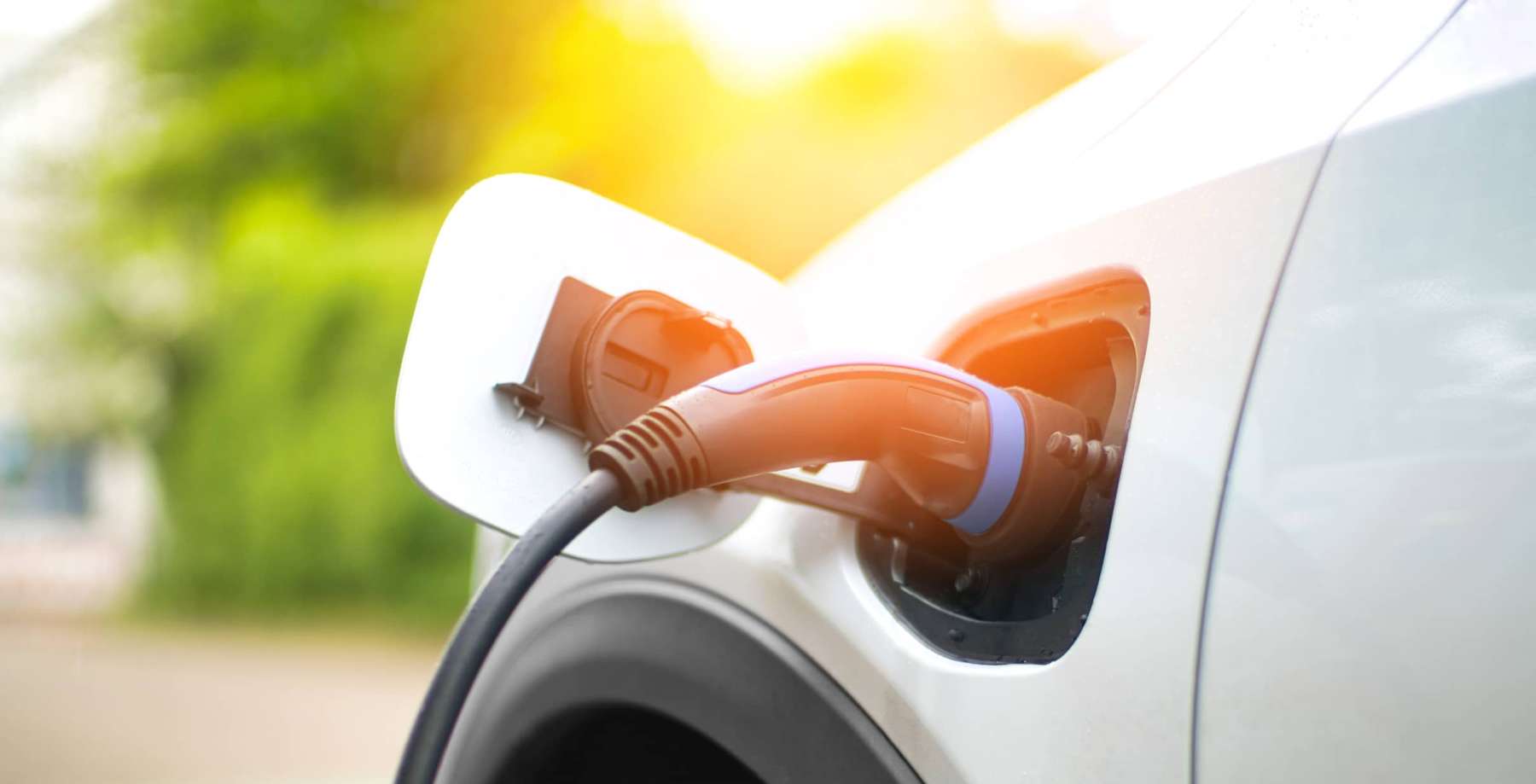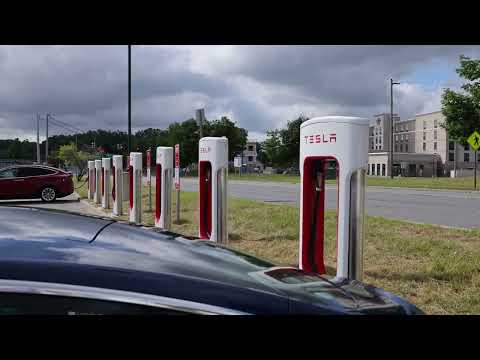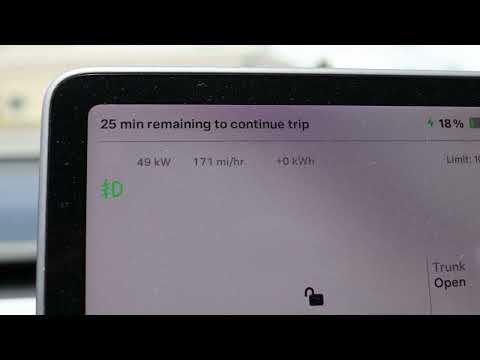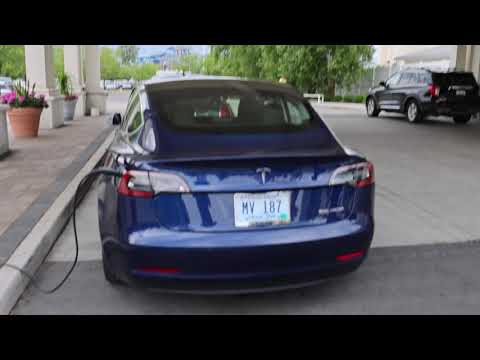From RI to OH in an EV – Debunking the Myths of Electric Vehicles
Governor Dan McKee’s plan to make all vehicles sold in the state electric by 2035 has sparked a fierce debate. We took a 700-mile trip in an electric vehicle to debunk some of the most outrageous claims and address the real-world concerns about electric vehicles.
July 11, 2023, 1:18 pm
By Greg Brailsford
Several months ago, Governor Dan McKee announced a plan to require that all vehicles sold in the state by 2035 be electric. Whether or not you believe that McKee was serious, some on social media responded fiercely with claims that ranged from plausible to outright absurd.
We will attempt to debunk the most outrageous claims later in this article, but the biggest real-world concern that car buyers have with regards to EVs is their range. As an EV owner for the past four years, questions about range and charging are the #1 concern raised, and most studies conclude the same. So we took a trip from RI to OH, 700 miles each way, in a Tesla Model 3 to determine a) If it’s possible to leave RI in an EV and not be left stranded, b) How frequent and available charging stations are, c) What is the overall experience like driving long distances in an EV.
Although the author of this piece drives a Tesla, it is not in any way an endorsement. While Teslas are still largely considered the gold standard of electric vehicles, they are not without fault1. We encourage potential EV buyers to consider any brand they wish, especially as Tesla’s charging connector is becoming a standard and most EVs from other brands will be permitted to use Tesla’s vast Supercharger network in about 6 months.
Tesla provides a handy trip planning website so you can see in advance where the chargers are in relation to your route. Just pop in your destination and your route is shown with recommended chargers clearly marked. Here is the route it mapped out for our trip, which pretty much the same route one would take in a gas-powered vehicle.

With most Li-Ion batteries, it is not wise to keep them fully charged all the time (this includes your mobile phone2). Tesla recommends keeping the battery charged to 90% or less, but for long trips, topping up to 100% is acceptable. In order to keep the battery at 100% for the least amount of time, we scheduled charging to start overnight and be ready to go at 7:00am, via the Tesla mobile app. The app allows you to either set a time you want the car to be ready (in which case it will turn on climate control too), or choose a time to start charging.
If you lived in an area that charged different rates for electricity at different times of the day, you could set the car to only charge during those times. But RI does not. 👎
Speaking of leaving the house, if you buy an EV you will probably want to include a home wall charger with the purchase. Although you can plug most EVs into a standard 120V wall outlet, the charging rate is quite slow and it is less energy efficient. The official Tesla wall charger (and others like it) costs $475 and on average an electrician will charge $600-$1,000 for installation depending on where your panel box is in relation to the car and your current electrical setup. There is currently a 30% federal rebate on your home charger costs. We’ll cover rebates on the car itself a little later.


To begin our trip, we typed our destination into the navigation, and it plotted out the trip starting with our first Supercharger station about 2 hours and 40 minutes away. This was the longest leg of the trip, which conveniently breaks up the drive, allowing for bathroom breaks and meals. EV manufacturers know that range anxiety is a thing, so the vehicle also shows how much battery charge you will have remaining once you reach the Supercharger. Tesla is pretty conservative and will generally try to map out charger stops so that you arrive with at least a 10% charge remaining.

After making the same trip a couple of times and trying out different Superchargers, you learn which ones are the “cool” charging stations with lots of food options and things to do, and which ones are situated in a hotel or casino parking lot with little else to do. When Tesla elects to send you to one of the lame Superchargers, you can bypass it by entering the one you’d like to go to into the navigation. We did that here, electing to go to the Guilderland Supercharger which is located at the Cross Gates Mall, instead of the one in Albany.
We arrived with 19% of our battery remaining instead of the 25% it originally predicted, but that’s what happens when you average 82MPH for most of the trip. Tesla takes into account speed, elevation, wind, temperature, and other factors to estimate range. When driving at 70-75MPH it has been very accurate in our experience. The vehicle recommended charging to 83% so we did, and the 64% of charge added to the battery took about 18 minutes, enough time for a restroom break. Once again, we were off to the next Supercharger in Syracuse, NY about 2 hours away.

The Syracuse Supercharger is one of the less exciting ones with very little to do, but it was 12:20pm and there was a nearby KFC so we grabbed lunch there and carried on. The next Supercharger was in Fredonia, NY about 2 hours and 20 minutes away. The Fredonia Supercharger is in the parking lot of a Denny’s. Perfect spot for a bathroom break, so we took the kids in. When we got back to the car, we had about 15 minutes of charging left to do, so we watched some YouTube videos. One of the nice things about Teslas is the amount of entertainment you can mess around with while waiting for charging to complete. While the car is parked you can watch YouTube, play video games, stream on Netflix or Disney Plus, and other stuff all on the main screen.

Charging completed in about 20 minutes. This Supercharger was the highest speed charger Tesla currently offers, known as a Level 3 Supercharger. It is capable of delivering 250KW and can add roughly 1,000 miles of range per hour. Comparatively, the recommended wall charger to charge at home delivers 11.5KW and adds 44 miles of range per hour. Using a standard 120V AC outlet delivers 1.3KW and adds about 5 miles of range per hour.
If you drive less than 50 miles per week, the included portable 120V AC charger is more than adequate. Otherwise, the wall charger is a better bet. The last thing you want to do is arrive home from a trip with little charge remaining and be unable to go back out again because it will take hours to provide the necessary range. Many EV owners who live in apartments and/or have short commutes get by just fine on the 120V AC charger. On long trips like this, we always take the 120V AC charger and a 50-foot long rated extension cord just in case. We have never needed it in an emergency, but when we stay in North Conway, NH, the home we rent only has regular outlets, so we plug in with the portable charger and it works out fine, adding over 100 miles per day in range, which is far more than we need.
Once we left Fredonia, we were on to our final Supercharger station in Erie, PA. There are now two in Erie, one we call the “Cracker Barrel Supercharger” because that is the only thing there, and one we call the “Cool Gas Station Supercharger”, located at a convenience store (and gas station) named Sheetz. It’s the largest convenience store we have ever been in that can still be called a convenience store. It sells premium food, every candy product that exists, alcohol, soft drinks, and a lot of other stuff. We spent much of the charging time browsing the place in awe. After 20 minutes of charging we were on our way3 to our final destination.
We should also note that the author of this piece is not one to drive 12 hours somewhere. Flying was always the preferred method of traveling anywhere that was a half day drive. But after our Southwest Airlines debacle, and the fact that the Tesla can drive itself on highways quite competently, we opted to drive instead. Between the stops every 2.5 hours and the self-driving, it’s a far more palatable drive than we originally envisioned (which explains why this is our 4th time doing it). At exactly 7:00pm we arrived at our destination in Sandusky, OH.
We arrived at the hotel at Cedar Point with 7% charge, just around what I was aiming for. The hotel, inexplicably does not have any EV charging stations on site, so to make it up for it, they allow guests to plug in at the front of the hotel for free. These are slow 120V AC chargers, but since you are typically on site the entire time, the slow charging time is irrelevant.
The ride back a weekly later was uneventful except for one key incident which will bring us to the next part of this EV report: Debunking Myths. Here we’ll layout the facts on EVs. Whether it helps or hurts the EV cause, it is important to understand the facts about electric vehicles.
EV Myths Debunked
EVs catch fire more often than gas-powered vehicles
One of the major catalysts behind this belief is that in the rare instances when EVs catch fire, it makes the news. But studies using the National Transportation Safety Board’s own data show that of every 100,000 gas-powered vehicles sold, 1,530 catch fire. Of every 100,000 electric vehicles sold, just 25 catch fire. In other words, gas-powered (ICE) vehicles are 60 times more likely to catch fire than EVs. This makes sense, as ICE vehicles literally rely on a series of non-stop mini explosions for movement. And by coincidence, here’s a photo we snapped of an ICE vehicle that caught fire on I-90 as we were returning home from our trip.
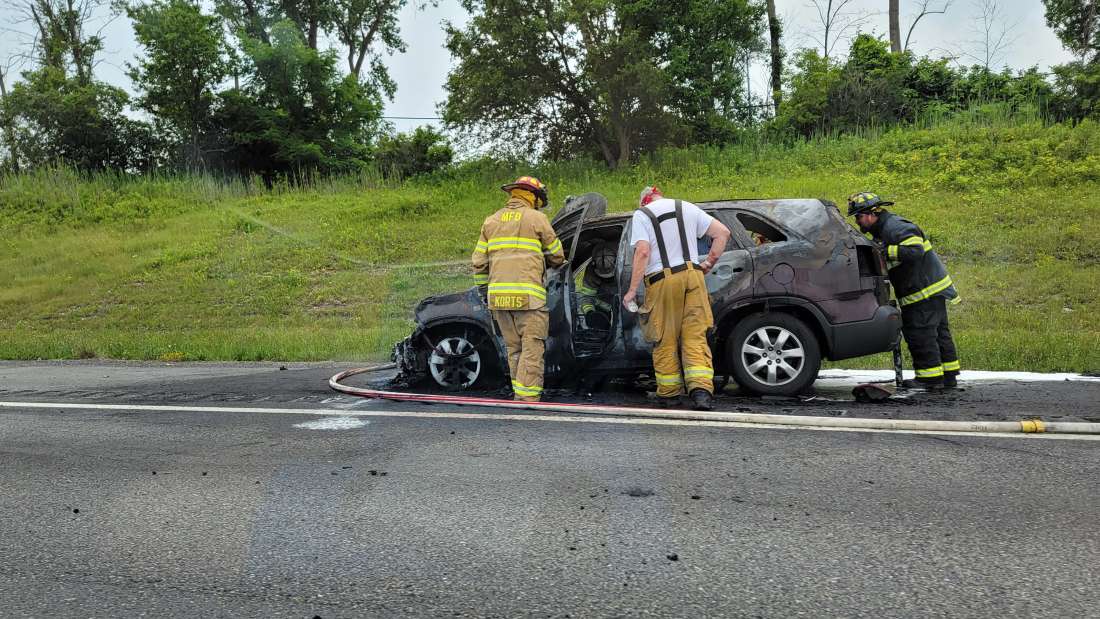
It should be noted that EV fires take far more water to extinguish than gas-powered vehicles, however their chances of catching fire are so rare it does help to mitigate the disparity.
If everyone owns an EV, it will create more electricity demand than the grid can handle
Have you noticed that here in Rhode Island, nobody puts their home air conditioner on in the winter, but everyone puts it on in the summer – now more than ever? Air conditioners use enormous amounts of electricity. How does the grid cope with this sudden massive change in electricity demand? How has California handled nearly 17% of its vehicles being EVs? The answer to both is simple: Grid management. Utilities are continuously upgrading transmission lines and equipment to meet demand as the nation grows. They will continue to do this over time as demand grows – because they want to make money. EVs = $. And they will have plenty of time to do it.

If we took Governor Dan McKee’s alleged plan to have all new cars sold by 2035 be EVs and applied it to the entire country, it would still take until 2050 for every car in the nation to be an EV. Additionally, unbeknownst to the commenter above, most of us do not arrive home “overnight”. We arrive home at staggered times: In the afternoon. In the evening. In the morning if we worked a late shift. Some folks even charge at work. EV owners typically plugin in a) if they need to – which is not every day, b) when they finish their daily travel. Charging is staggered throughout the day and there will never be a single time when the majority of EV owners are charging simultaneously. And if everyone did charge overnight, great! Utilities in other states actually charge less for power overnight because demand is so low, they prefer you use it then.
People who park on the street won’t be able to charge an EV
This myth assumes that capitalism does not exist and that nobody wishes to make money off of the growing EV charging market. This is America where if there is demand for something, there will be plenty of folks willing to fill it. Curbside and lamp post chargers are already on the market and beginning to penetrate major cities.


Every utility pole also has the potential to become a charging station. We have electricity on every street and plenty of voltage to charge an EV. All it takes is bringing a line down and installing a dock. The US has already allocated billion and billions of dollars to pay for this via the Infrastructure Investment and Jobs Act.
People who live in apartment complexes won’t be able to charge an EV
Owners of apartment complexes, depending on whether new or a retrofit, have a few options to provide EV charging to their tenants at little to no long-term expense. Option 1) Install chargers, assign parking spots to each tenant, charge tenants for actual usage with a small markup over cost to over installation. Option 2) This is a better solution for new construction. Building owners can install chargers tied to the tenant’s electric meter, and usage is simply included as part of their regular utility bill. A small one-time or annual fee could be assessed to cover the costs of install. With 30% federal rebates and costs dramatically decreasing, there simply is no excuse to forgo this upgrade for large complexes. Oh, and here’s what it might look like.
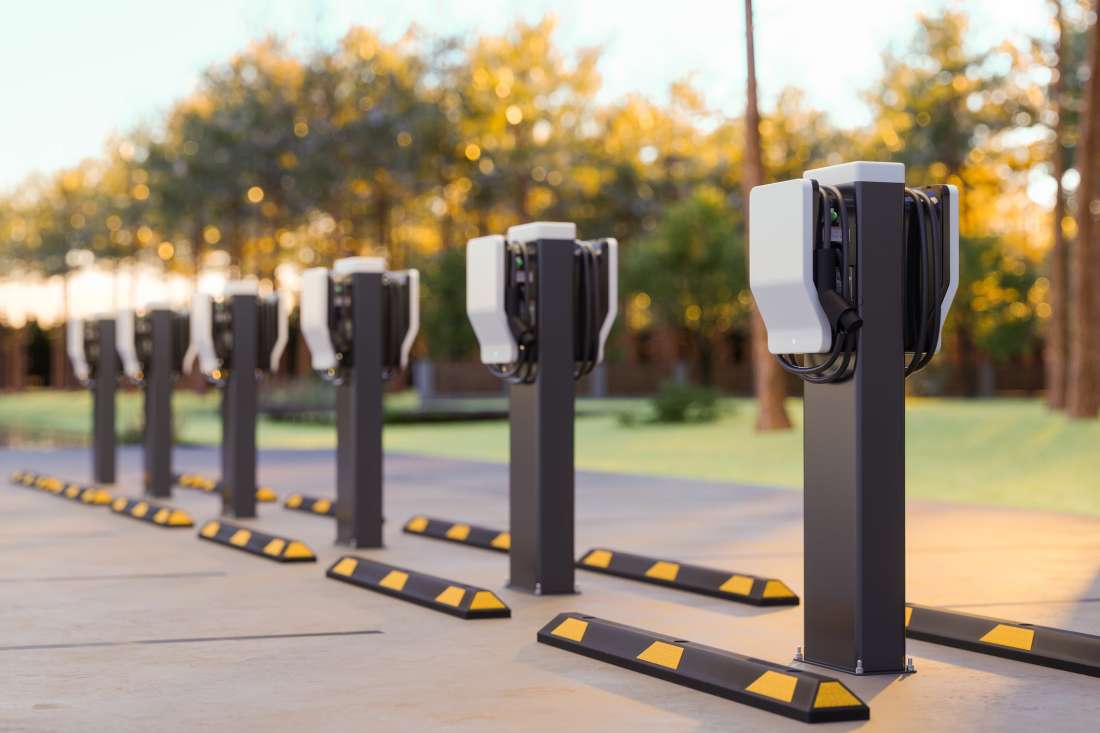
The manufacture of electric vehicles creates more pollution than gas-powered vehicles produce
It is without question that the process of manufacturing an electric vehicle produces more greenhouse gas emissions (GHG) than that of a gas-powered vehicle. The process of mining and manufacturing EV batteries is emission intense, but once the car is manufactured, emissions are only generated from the source of electricity. Reuters analyzed data from the Argonne National Laboratory and found that: Assuming the electricity generated comes from just 20% renewables and 23% of the rest is coal, the average US mix at this time, it would take a Tesla Model 3 just 13,500 miles to break even on emissions with a gas-powered Toyota Corolla. Every mile after that, the EV wins substantially on fewest emissions. Over time, as renewables continue to penetrate the mix of generation, the breakeven number will drop further and further. With a 100% renewables mix, the breakeven mileage for the Model 3 is 8,400 miles.
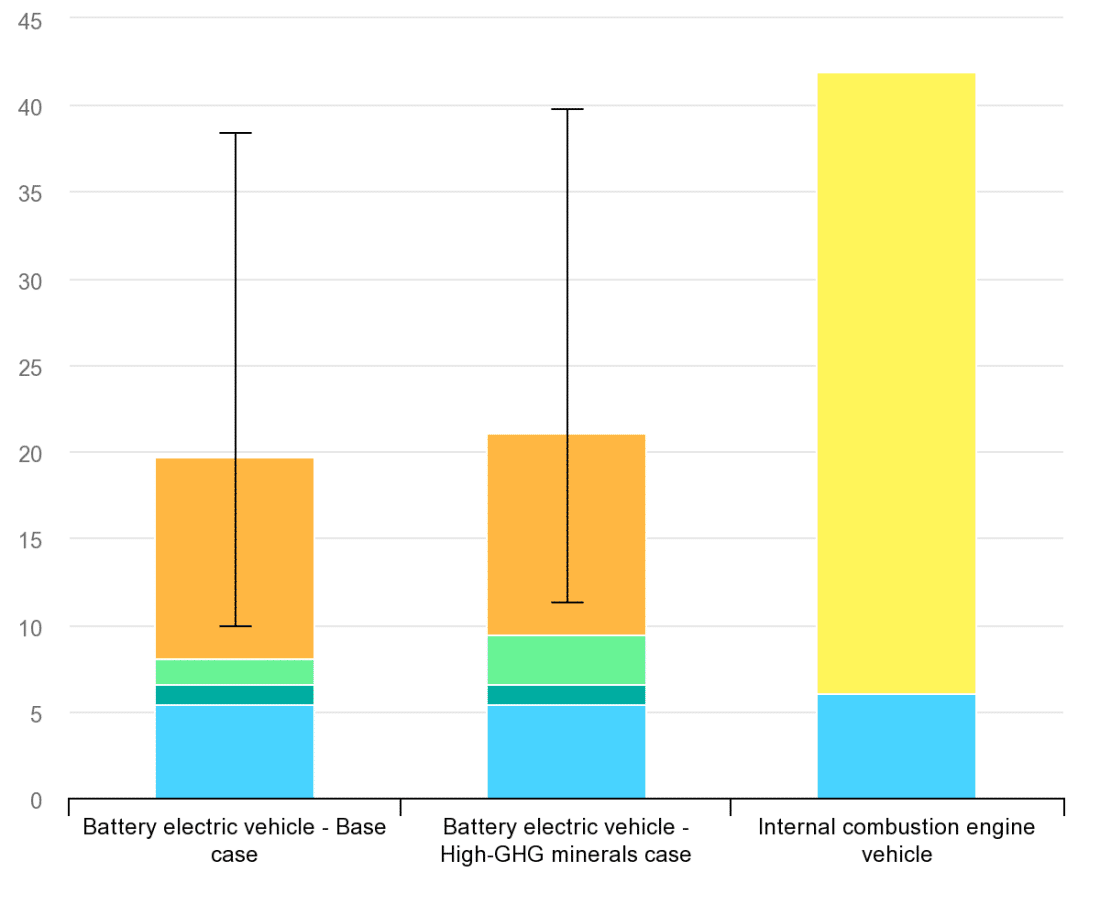

Owners of multi-family units will have to upgrade their electric panel at great expense to provide EV charging
Assuming a multi-family dwelling has 150 amp service, which should be the bare minimum, two EVs can charge off a single 100 amp charger without issue, and only actually use 80 amps if charging full load at the same time, leaving plenty of remaining capacity.

Additionally, nearly every EV on the market allows the user to set the maximum amps that can be drawn while charging. In the event the dwelling is limited, landlords can instruct users to set their vehicles to specific levels to avoid tripping the circuit, and still be allow tenants to charge their vehicle at Level 2 speeds. Though it stands to reason that multi-family dwellings that offer and advertise EV charging early on will draw more renters and demand higher rates than those without.
The weight of EVs will cause bridges and garages to collapse
Over time, the average weight of a vehicle in America has drastically increased from around 3,200 pounds in 1980 to 4,100 pounds in 2022, a massive 22% increase – largely due to the prevalence of SUVs and pickup trucks. Despite this increase in weight, we have not retrofitted our bridges and roads to account for this.

Many bridges in existence are many decades old and yet have not crumbled due to all the trucks on the road. EVs, while heavier than a typical car, typically weigh equal to or less than an SUV. For example, the best selling EV in America, Tesla Model Y weighs 4,500 pounds. The Top 3 selling gas-powered vehicles in America, the Ford F-150, Chevy Silverado, and Ram Pickup – all max out at between 5,500 and 6,500 pounds. While aged parking garages are collapsing due to weight, this issue is not being caused by EVs. However, because EVs are not much lighter than SUVs, government officials should develop processes to certify old infrastructure to ensure it will remain compliant as the overall vehicle fleet continues to gain weight.
EVs are expensive and most people cannot afford them
While the price of all vehicles has risen over time, especially with recent inflation, EV prices are not the primary cause. The overwhelming majority of EVs sold in the US are priced under $50,000 – before government rebates. After rebates, the prices become much harder to beat.

The #1 selling EV on the market, the Tesla Model Y costs $37,500 after the $7,500 federal tax credit and RI $2,500 Drive EV program rebate. Don’t need an SUV? The Model 3 is practically the same car in sedan form for $30,000 after the rebates. The Chevy Bolt EV starts at an absurdly affordable $17,500 after rebates. Meanwhile, on the gas powered side, the top selling Ford F-150 starts at $34,000 and the top selling Toyota RAV4 start at $29,000. Although EVs have lower prices due to government incentives, there is no reason not to take advantage of it. If you pay taxes, why not get a chunk of it back and enjoy the benefits of an EV?
There are not enough charging stations in the Northeast to take a road trip.
Five years ago, when the popular Tesla Model 3 driven in our road trip was released, you may have had a point. We were still able to take long road trips but you didn’t have much of a choice as to where you charged. There was only one high-speed charger every 200 miles or so on most interstates. Now? High-speed chargers in our area are plentiful and there is simply no excuse to not travel wherever you wish to go. But don’t take our word for it. Here is a graphic of only Tesla’s high-speed Superchargers in our area. This does not include any other public charging stations, of which there are hundreds. Each Supercharger is capable of charging a vehicle from 0% to 75% (about 200-250 miles of range) in 20 minutes. If you were to drive from the far left of this map all the way to the far right of the map, it would encompass less than 400 miles. In other words, you would need just one charging stop to travel across the entire map.

EVs are not fun to drive or own.
Not only are EVs fun to drive, but many would agree they are more so than their gas equivalents. EVs accelerate with the same responsiveness of a gas-powered vehicle set in first gear – except all the time and at any speed. 0-60 speeds of EVs far exceed their similarly-priced gas-powered. For example, the Tesla Model 3 Performance can accelerate to 60mph in 3.1 seconds and costs $54,000 before any rebates. The Porsche 911 accelerates to 60mph in 4 seconds and costs over $115,000. And the handling of the Model 3 is surprisingly nimble due to its lower center of gravity. In addition to their spirited and instant acceleration, EVs maintain their performance over time because their motors don’t get dirty. Speaking of which, EVs require virtually no maintenance and save drivers thousands on these costs over time. There are no oil changes, no fluid changes, and no filters or brakes to replace. Wait, what? You don’t have to replace the brakes? Not for a very long time.
When you want to come to a stop an EV, you don’t tap the brake. Instead, you gradually lift off of the accelerator. EV motors then turn your forward momentum into energy that is fed back into the battery (the wheels and motor act as a generator). The enormous resistance in the wheels needed to generate this power slows the vehicle down, making it unnecessary to use the brake pedal in all but sudden braking situations. As a result, most EVs have brakes and pads rated to last well into the later stages of the vehicle’s life. Commonly referred to as one-pedal driving, once you get used to, you may have a hard time living without it.
Wrapping it up
We hope you enjoyed this comprehensive overview of owning and traveling long distances in an EV. We made efforts to answer as many common complaints and myths as possible while demonstrating in the real-world that traveling long distances in an EV is a piece of cake. Additionally, we have no doubt that infrastructure in both Rhode Island and nationally will grow to accommodate EVs as they are adopted by more people. If you have never driven an EV, why not take a test drive and see what all the hype is about? While government rebates are a tremendous gift to those in the market for a new car, EVs still present a plenty of reasons to consider one.
Notes
1. Since the car was purchased the vehicle in 2018, the rear glass cracked on its own requiring replacement, the rear trunk lid trapped water and had to be sealed, the front left control arm had to be replaced twice, a wheel speed sensor failed which caused the car to lose all power assist functions (steering, brakes, etc.), rear defroster stopped working, the passenger side heated mirror stopped working, the side repeater camera stopped working, and the charge port stopped opening.
2. Some phones including Samsung Galaxy devices have a setting to limit charging to 80% which significantly improves the longevity of the battery at the expense of starting out with a bit less charge.
3. It says “25 minutes to continue trip”, but our goal was to arrive at our destination with as little charge as possible (because they offer free charging), so we left the last two stations a bit early.



